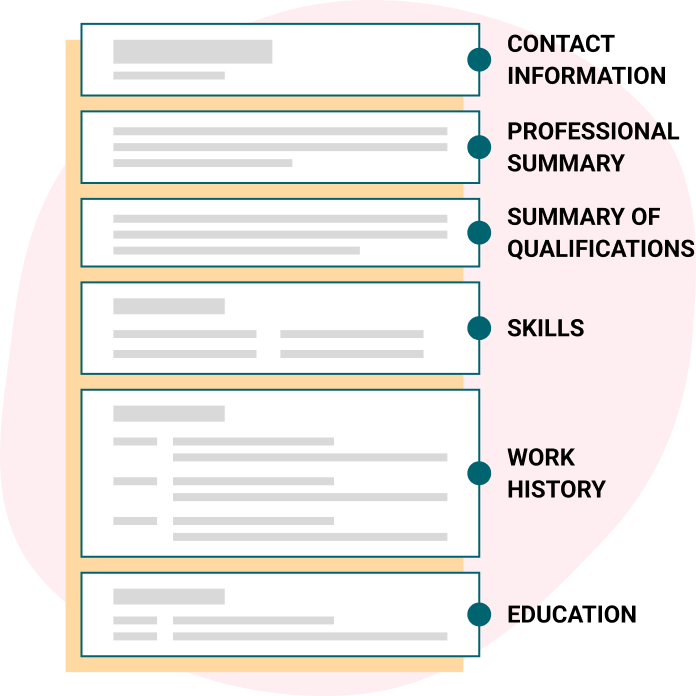As you compose your adjuster resume, you first need to identify which of the many sub-categories you identify with. All adjusters go into action when an event causes harm to the insured, but there are many specialties in the field, like property damage, medical claims, workers’ compensation, and auto accidents. If you have experience in one area and hope to take advantage of your skills to crossover to another, your adjuster resume will differ from the medical claims adjuster who wants to move up but remain in the medical realm. If you’re open to either possibility, your resume will include facets of both. An additional consideration is whether your experience is as a company, independent, or public adjuster. All of these factors will impact how you format your resume. Adjuster resume samples that are specific to your experience can be very helpful.
Before you begin to write, give some thought to what you’ll include in each of the following resume sections:
- Summary statement
- Work experience
- Skills
- Education
- References
Another reason why you should review adjuster resume samples is to determine whether the chronological or functional type best suits your goal. The chronological format, which lists your job history from the most recent position to the least, is the most common and therefore the most familiar to potential employers; it also works well for those who have progressed regularly in their field and who have no gaps in employment.
A functional resume is formatted very differently and is often used by those with significant gaps in employment or those who are looking to transition into a new career. It usually opens with a summary or profile, and where the chronological resume then lists dates, jobs, and employers, the functional resume’s headings include skills, accomplishments, and quantifiable achievements, giving the applicant an opportunity to demonstrate how they can meet the job requirements even if they don’t have a traditional job history.








